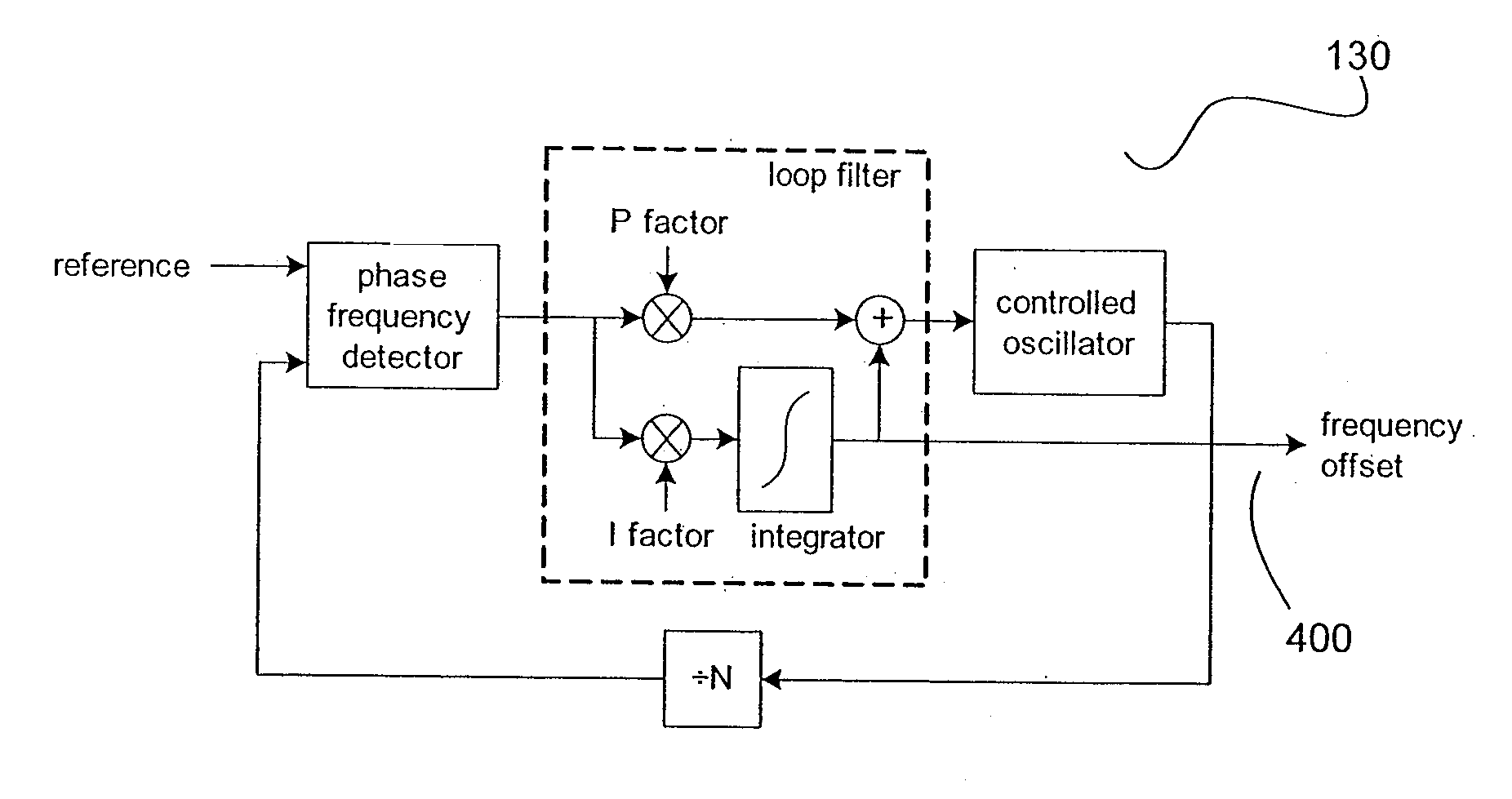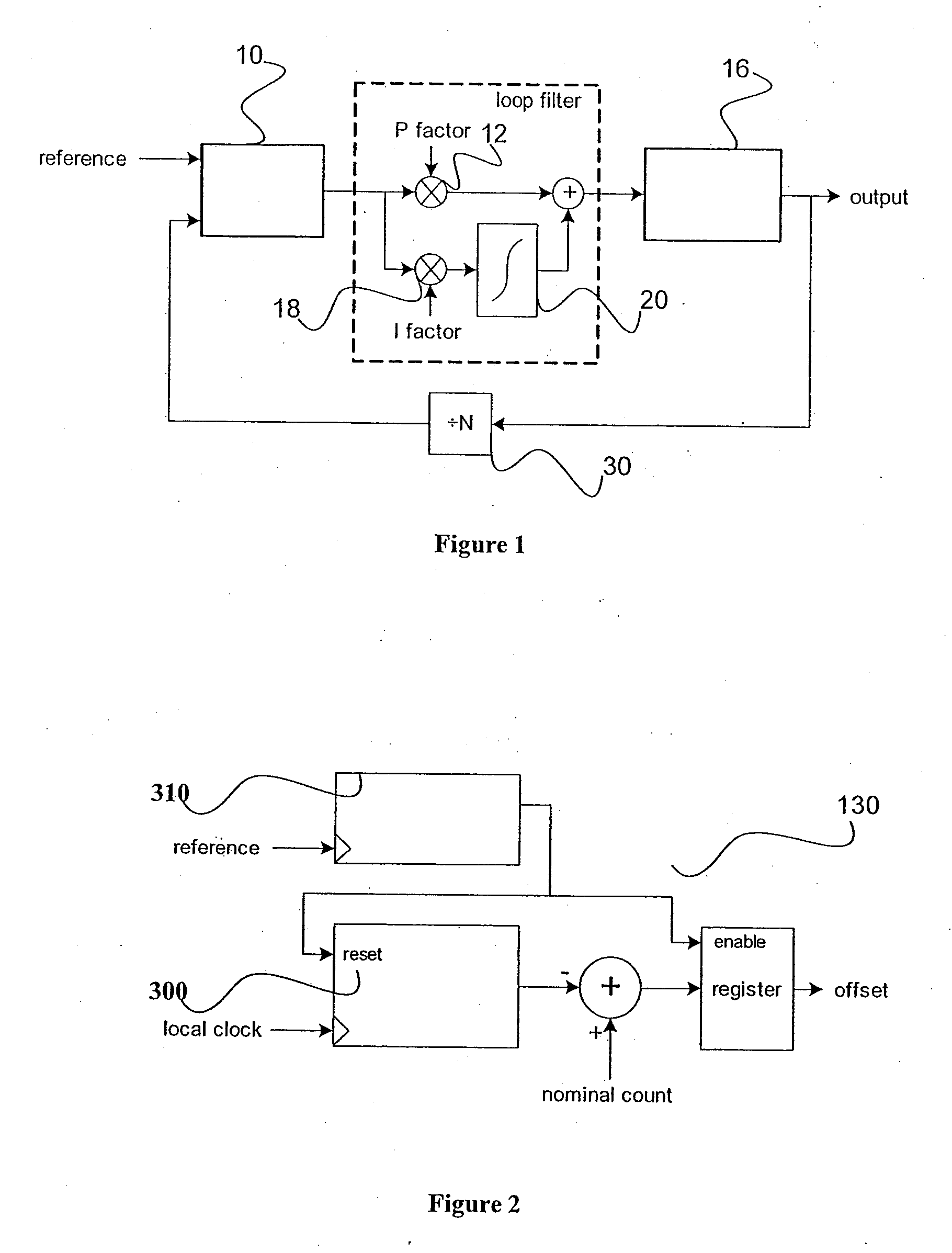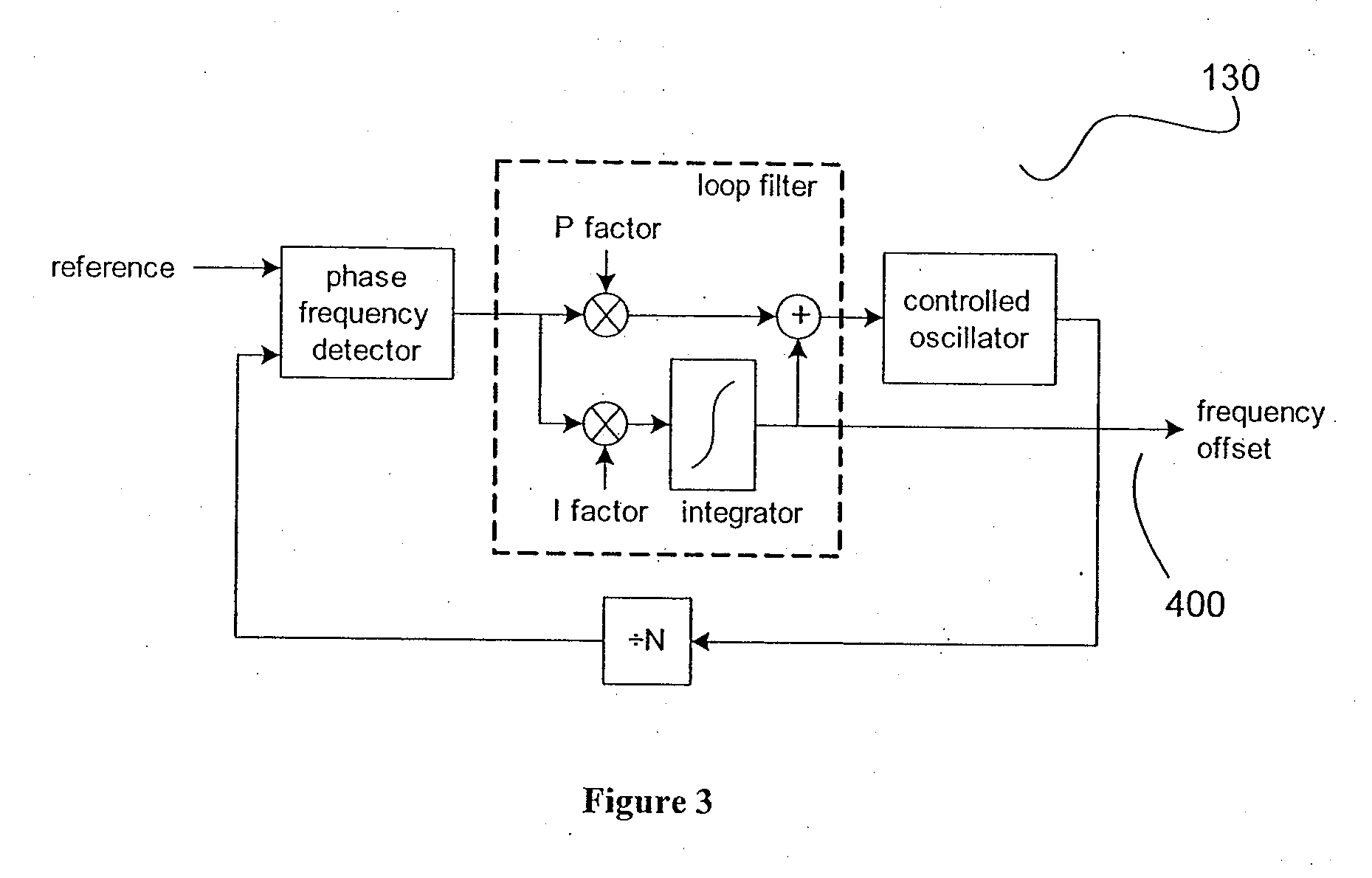Phase Locked Loop Fast Lock Method
a phase lock and fast lock technology, applied in the direction of pulse automatic control, oscillator tubes, electric devices, etc., can solve the problems of affecting the speed the bandwidth of the pulsing pump, and the inability to meet the numbers, so as to reduce the bandwidth and/or dampen the pulsing
- Summary
- Abstract
- Description
- Claims
- Application Information
AI Technical Summary
Benefits of technology
Problems solved by technology
Method used
Image
Examples
Embodiment Construction
[0042] Broadly, the method to decrease the settling time and improve the quality of the output clock during the settling disclosed in this patent comprises of the following steps: estimate the new frequency offset, integrator ramp to the new frequency offset, phase build-out or phase pull-in, decay interval, and switch to higher bandwidth and / or lower damping to let the PLL settle.
[0043]FIG. 4 illustrates a PLL in accordance with teachings of this invention. A phase and frequency detector 100 outputs to an adder 110 and also to register 112, which is controlled by control unit 114. The output of register 112 is connected to adder 110. The register 112 is a preferred embodiment of a phase build out circuit as described in detail below. The output of adder 110 is. connected to comparator 118. The output of adder 110 is also connected to a pair of multipliers 120, 180, introducing the P and I factors respectively. The multiplier 120 is connected to the first input of adder 140 whose o...
PUM
 Login to View More
Login to View More Abstract
Description
Claims
Application Information
 Login to View More
Login to View More - R&D
- Intellectual Property
- Life Sciences
- Materials
- Tech Scout
- Unparalleled Data Quality
- Higher Quality Content
- 60% Fewer Hallucinations
Browse by: Latest US Patents, China's latest patents, Technical Efficacy Thesaurus, Application Domain, Technology Topic, Popular Technical Reports.
© 2025 PatSnap. All rights reserved.Legal|Privacy policy|Modern Slavery Act Transparency Statement|Sitemap|About US| Contact US: help@patsnap.com



